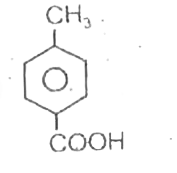The compound (A) in the following reaction sequence is:
(A) PCl5−−→ (B) Alc KOH−−−−→ ( C) H2/Ni−−−→
Propane :
Chloroethane
Ethanol
1,2-Dichloroethane
None of the above
The correct Answer is:D
To determine the compound (A) in the reaction sequence leading to propane, we can analyze the reactions step by step.
Step 1: Identify the Reaction with PCl5
The first reaction involves compound (A) reacting with phosphorus pentachloride (PCl5). PCl5 is known to convert alcohols into alkyl chlorides through a nucleophilic substitution reaction. This suggests that compound (A) is likely an alcohol.
Step 2: Determine the Structure of Compound (A)
Since the final product of the reaction sequence is propane (C3H8), we can deduce that compound (A) must be an alcohol with a three-carbon chain. The possible structures for a three-carbon alcohol are:
- 1-Propanol (propyl alcohol)
- 2-Propanol (isopropyl alcohol)
Step 3: Reaction of Alcohol with PCl5
When either 1-propanol or 2-propanol reacts with PCl5, it will produce:
- 1-Propanol → 1-Chloropropane (B)
- 2-Propanol → 2-Chloropropane (B)
Both reactions will yield alkyl chlorides.
Step 4: Reaction with Alcoholic KOH
Next, the alkyl chloride (B) reacts with alcoholic KOH. This reaction is an elimination reaction (dehydrohalogenation) that will produce an alkene:
- 1-Chloropropane → Propene (C)
- 2-Chloropropane → Propene (C)
In both cases, the product is propene (C3H6).
Step 5: Hydrogenation of Alkene
Finally, the propene (C) undergoes hydrogenation in the presence of hydrogen and nickel, resulting in propane (C3H8).
Conclusion
Since both 1-propanol and 2-propanol can lead to the formation of propane through the given reaction sequence, we conclude that compound (A) must be either 1-propanol or 2-propanol. However, since the question does not provide specific options for alcohols, we can assert that compound (A) is a three-carbon alcohol.
Final Answer
Compound (A) is either 1-Propanol or 2-Propanol.
---
The first reaction involves compound (A) reacting with phosphorus pentachloride (PCl5). PCl5 is known to convert alcohols into alkyl chlorides through a nucleophilic substitution reaction. This suggests that compound (A) is likely an alcohol.
Since the final product of the reaction sequence is propane (C3H8), we can deduce that compound (A) must be an alcohol with a three-carbon chain. The possible structures for a three-carbon alcohol are:
- 1-Propanol (propyl alcohol)
- 2-Propanol (isopropyl alcohol)
When either 1-propanol or 2-propanol reacts with PCl5, it will produce:
- 1-Propanol → 1-Chloropropane (B)
- 2-Propanol → 2-Chloropropane (B)
Next, the alkyl chloride (B) reacts with alcoholic KOH. This reaction is an elimination reaction (dehydrohalogenation) that will produce an alkene:
- 1-Chloropropane → Propene (C)
- 2-Chloropropane → Propene (C)
Finally, the propene (C) undergoes hydrogenation in the presence of hydrogen and nickel, resulting in propane (C3H8).
Since both 1-propanol and 2-propanol can lead to the formation of propane through the given reaction sequence, we conclude that compound (A) must be either 1-propanol or 2-propanol. However, since the question does not provide specific options for alcohols, we can assert that compound (A) is a three-carbon alcohol.
Compound (A) is either 1-Propanol or 2-Propanol.
Similar Questions
Knowledge Check
Compounds A, B and C in the following reaction sequence are:
C2H5BrAgCN−−−→AH3O+−−−→ B + CAC2H5CN,C2H5COOH,NH3BC2H5NC,C2H5NH2,HCOOHCC2H5NC,C2H5NHCH3,HCOOHDnone of theseCompounds A, B and C in the following reaction sequence are:
C2H5BrAgCN−−−→AH3O+−−−→ B + CAC2H5CN,C2H5COOH,NH3BC2H5NC,C2H5NH2,HCOOHCC2H5NC,C2H5NHCH3,HCOOHDnone of theseSOCl2−−−→(A)KCN−−→(B)H+−−→(C ), the compound (C ) is
 A
A B
B C
C D
D
The compound C7H8 undergoes the following reactions :
C7H83Cl2/Δ−−−−→ABr2/Fe−−−−→BZn/HCl−−−−→C
The product 'C' is
View SolutionIdentify (Z) int eh following reaction series :
Etahanol PCl5−−→(X)Alc. KOH−−−−−→(Y)H2SO4,roomtemp.−−−−−−−−−−−−−−→H2O,heat(Z)
View SolutionThe product (D) in the following sequence of reactions is :
C2H4HBr−−→(A)NaOH(aq.)−−−−−−−→(B)Na−−→(C)CH3I−−→
View SolutionWhat are X and Y in the following reaction sequence ?
C2H5OH[O]−−→XCl2−−→Y
View SolutionIn the following sequence of reactions,
CH3CH2CH2BrKOH(Alc)−−−−−−→ (A) HBr−−→ (B) KOH(aq)−−−−−→ (C ) The product (C) is
View Solution

